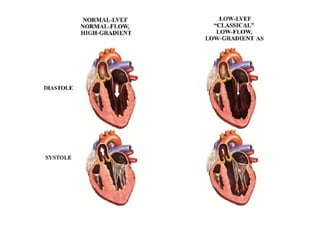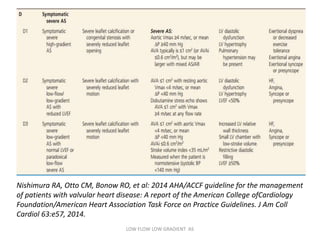low flow low gradient aortic stenosis ppt
Should lifestyle interventions fail to control. The flow is affected in the same way that the blood flow is affected by FHD and MHD Figs.

Low Flow Low Gradient Aortic Stenosis When Is It Severe American College Of Cardiology
Therefore for most women the burden of testing is limited to a one hour.

. Figure 6 shows the MNs flow for cases 15. The latest Lifestyle Daily Life news tips opinion and advice from The Sydney Morning Herald covering life and relationships beauty fashion health wellbeing. Most women will be at low risk of developing gestational diabetes and can undergo a 50 g oral glucose challenge test.
This test has a good negative predictive value so that women who test negative are at low risk of developing hyperglycaemia and the associated risks of adverse pregnancy outcomes. Note that when the gradient of the MF is strong the FHD effects are important whereas MHD effects are strong when the MF gradient is low and M nF p 0. Therefore unlike type 1 DM type 2 disease can be prevented and managed by regular exercise and the adoption of diets that are high in fibre low in sugar and low in high glycaemic index foods as well as low in saturated and trans polyunsaturated fat as advocated by NHS UK 2017.
Diabetes UK 2017 NICE 2011 and NICE 2015b. However the pattern of the MNs is.

Simplifying The Approach To Classical Low Flow Low Gradient Severe Aortic Stenosis A Renewed Emphasis On The Resting Transthoracic Echocardiogram International Journal Of Cardiology

Signs Of Late Stage Vavular Heart Disease Valvular Heart Disease Assessment Of Lesion Severity Valvular Heart Disease Disease

Low Flow Aortic Stenosis Flow Rate Does Not Replace But Could Refine Stroke Volume Index Jacc Cardiovascular Imaging

Outcome Of Flow Gradient Patterns Of Aortic Stenosis After Aortic Valve Replacement Circulation Cardiovascular Interventions

Low Flow Aortic Stenosis Latest Explanations

Low Flow Low Gradient Aortic Stenosis When Is It Severe American College Of Cardiology

Impact Of Left Ventricular Dysfunction In Patients With High And Low Gradient Severe Aortic Stenosis Following Transcatheter Aortic Valve Replacement Canadian Journal Of Cardiology

